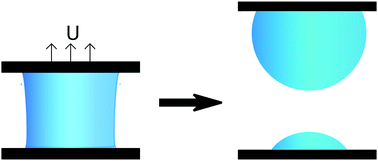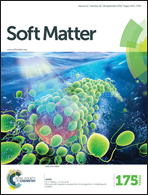Stretching liquid bridges with moving contact lines: comparison of liquid-transfer predictions and experiments
Abstract
Transfer of liquid from one surface to another plays a key role in printing processes. During liquid transfer, a liquid bridge is formed and then undergoes significant extensional motion while its contact lines are free to move on the bounding solid surfaces. In this work, we develop one-dimensional (1D) slender-jet and two-dimensional (2D) axisymmetric models of this phenomenon and compare the resulting predictions with previously published experimental data. For very low capillary numbers (Ca) (quasi-static stretching), predictions from both models of the amount of liquid transferred agree well with the experimental data, provided that the difference in receding contact angles (|Δθr|) between the two surfaces is sufficiently large. Notably, the amount of liquid transferred is primarily governed by the overall bridge shape and is not significantly influenced by contact-line motion toward the end of bridge stretching. For O(1) values of Ca, the models predict that each surface receives half the liquid, in agreement with experimental observations. For intermediate values of Ca (and very low values of Ca when |Δθr| is small enough), predictions from each model can deviate substantially from the experimental data, which we speculate is due to the influence of surface heterogeneities that are not included in the models. In this regime, there can be significant differences between the predictions of the 1D and 2D models, which is due to the tendency of the contact line to slip more in the 1D model. The models are also used to understand the influence of initial bridge shape on liquid transfer and to rationalize related experimental observations. The results from these fundamental studies will aid the optimization of gravure and other printing processes for manufacturing of printed electronic devices.


 Please wait while we load your content...
Please wait while we load your content...